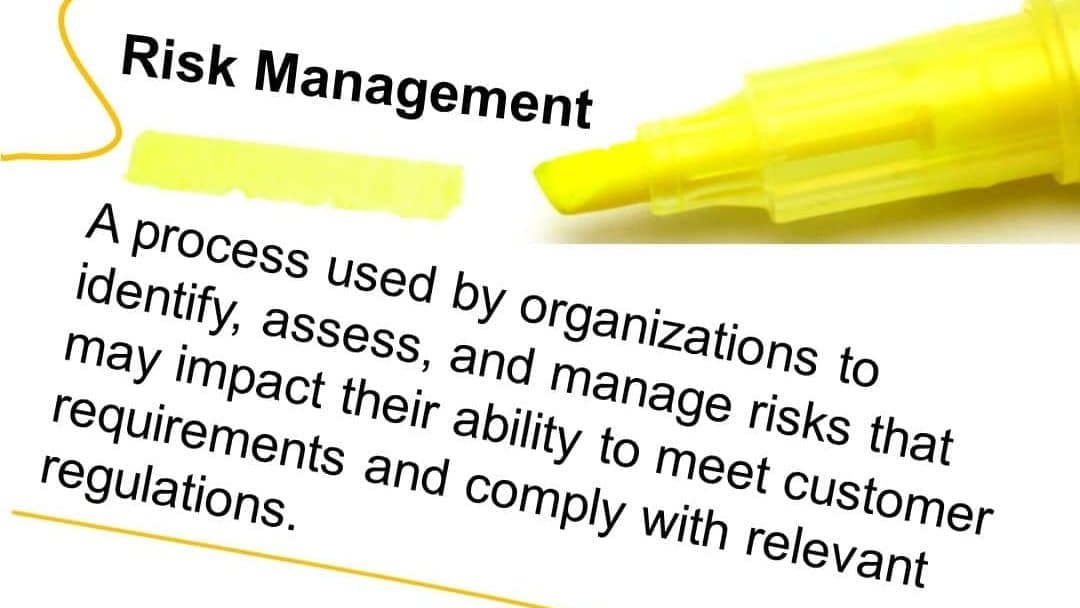ISO 9001 Risk Management is a process used by organizations to identify, assess, and manage risks that may impact their ability to meet customer requirements and comply with relevant regulations. ISO 9001 is a standard for quality management systems, and one of the requirements of the standard is that organizations must identify and address risks that may affect the quality of their products or services.
The ISO 9001 Risk Management process involves several steps:
Risk identification: The organization identifies potential risks that may impact the quality of its products or services, such as design errors, supply chain disruptions, or regulatory non-compliance.
Risk assessment: The organization assesses the likelihood and impact of each identified risk and prioritizes them based on their severity.
Risk mitigation: The organization develops and implements strategies to mitigate or eliminate identified risks, such as developing contingency plans or implementing process improvements.
Risk monitoring: The organization monitors the effectiveness of its risk mitigation strategies and makes adjustments as necessary.
ISO 9001 Risk Management is a critical component of a quality management system, as it helps organizations to proactively identify and manage risks that may impact their ability to meet customer requirements and comply with regulations. By effectively managing risks, organizations can improve their overall quality management system, increase customer satisfaction, and reduce the likelihood of costly quality issues or compliance failures.
Risk management is important for several reasons:
Minimizing the impact of risks: Every organization faces risks, whether they are related to product quality, operational processes, supply chain disruptions, or regulatory compliance. By implementing a risk management process, organizations can identify potential risks and take steps to minimize their impact, reducing the likelihood of costly failures and disruptions.
Improving decision making: Risk management helps organizations make informed decisions by providing a framework for assessing and prioritizing risks. By understanding the likelihood and potential impact of different risks, organizations can make better decisions about where to focus their resources and investments.
Enhancing organizational resilience: Effective risk management can help organizations to become more resilient in the face of uncertainty and change. By identifying potential risks and developing contingency plans, organizations can be better prepared to respond to unexpected events and minimize their impact.
Improving stakeholder confidence: Customers, investors, and other stakeholders expect organizations to have a robust risk management process in place. By demonstrating a commitment to risk management, organizations can improve stakeholder confidence and build trust.
Ensuring compliance: Many industries are subject to regulatory requirements, and non-compliance can lead to legal and financial penalties. Risk management helps organizations to identify and mitigate potential compliance risks, reducing the likelihood of regulatory failures.
Conclusion
Risk management is important because it helps organizations to minimize the impact of risks, improve decision making, enhance organizational resilience, improve stakeholder confidence, and ensure compliance with regulations.

